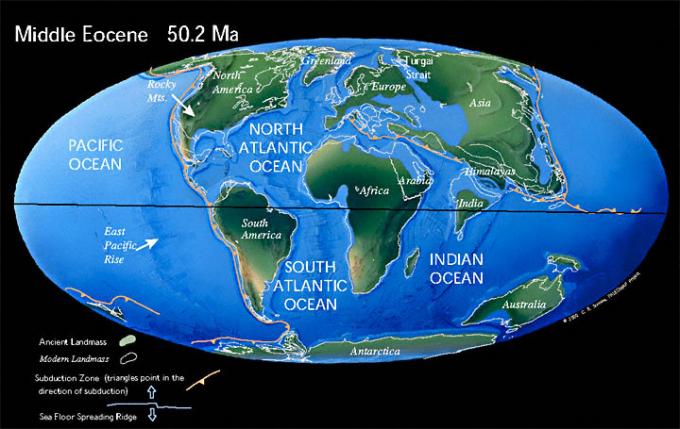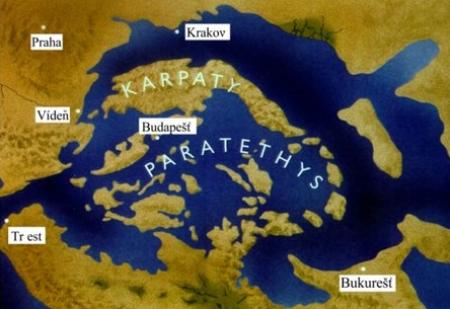Paleogene
The Paleogene is a geologic period and system that began 65.5 ± 0.3 and ended 23.03 ± 0.05 million years ago and comprises the first part of the Cenozoic Era. Lasting 42 million years, the Paleogene is most notable as being the time in which mammals evolved from relatively small, simple forms into a large group of diverse animals in the wake of the Cretaceous–Tertiary extinction event that ended the preceding Cretaceous Period. Birds also evolved considerably during this period, changing into roughly modern forms.
This period consists of the Paleocene, Eocene, and Oligocene Epochs. The end of the Paleocene (55.5/54.8 Mya) was marked by one of the most significant periods of global change during the Cenozoic, the Paleocene-Eocene Thermal Maximum, which upset oceanic and atmospheric circulation and led to the extinction of numerous deep-sea benthic foraminifera and on land, a major turnover in mammals. The Paleogene follows the Cretaceous Period and is followed by the Miocene Epoch of the Neogene Period. The terms 'Paleogene System' (formal) and 'lower Tertiary System' (informal) are applied to the rocks deposited during the 'Paleogene Period'. The somewhat confusing terminology seems to be due to attempts to deal with the comparatively fine subdivisions of time possible in the relatively recent geologic past, when more information is preserved. By dividing the Tertiary Period into two periods instead of five epochs, the periods are more closely comparable to the duration of 'periods' in the Mesozoic and Paleozoic Eras.
Source: http://en.wikipedia.org/wiki/Paleogene | ||
Virtual museum of the Czech Geological Survey, www.geology.cz, (C) Czech Geological Survey, 2011, v.0.99 [13.12.2011]


![[ENG]](img/vlajka-cr.gif) Česky
Česky 

